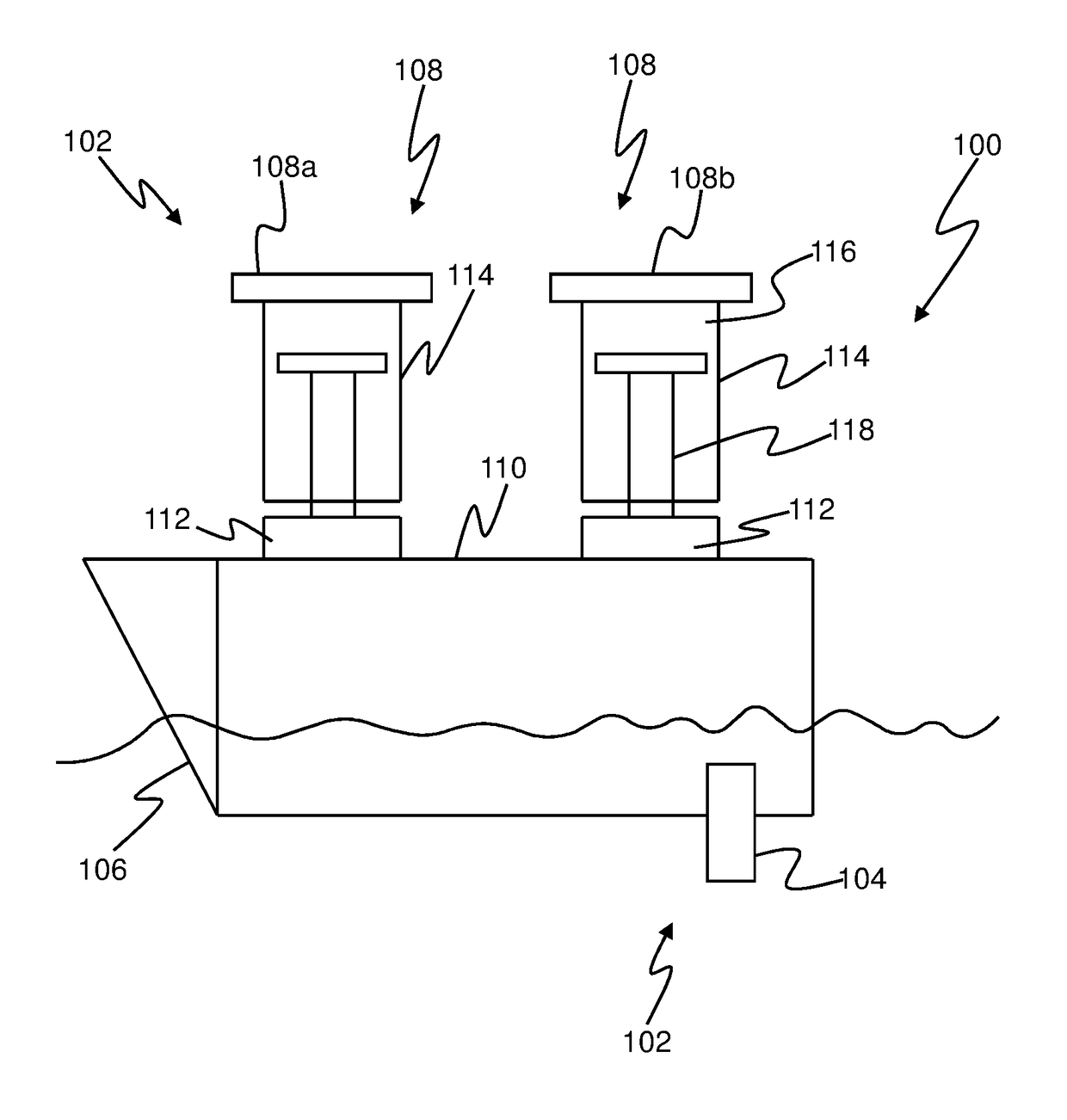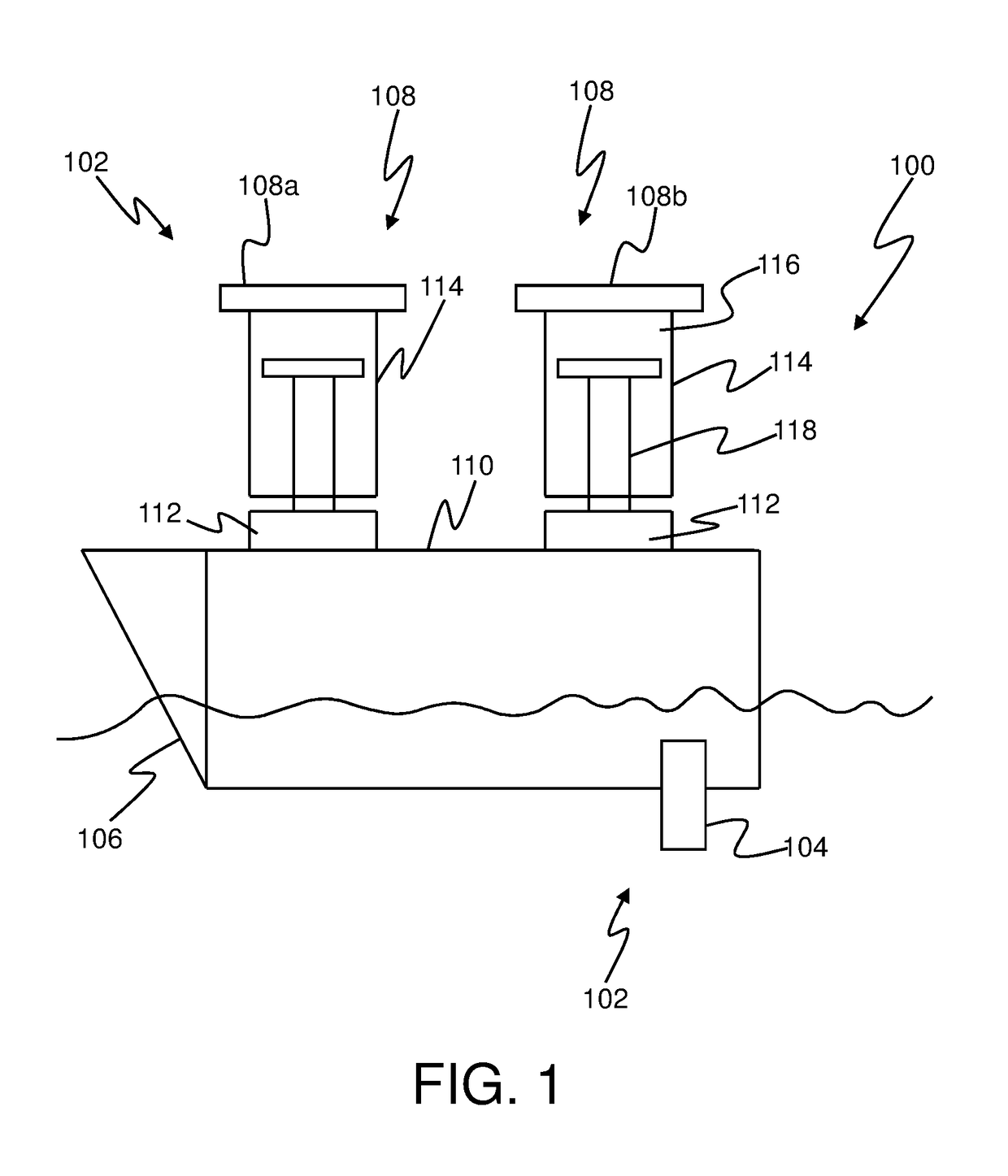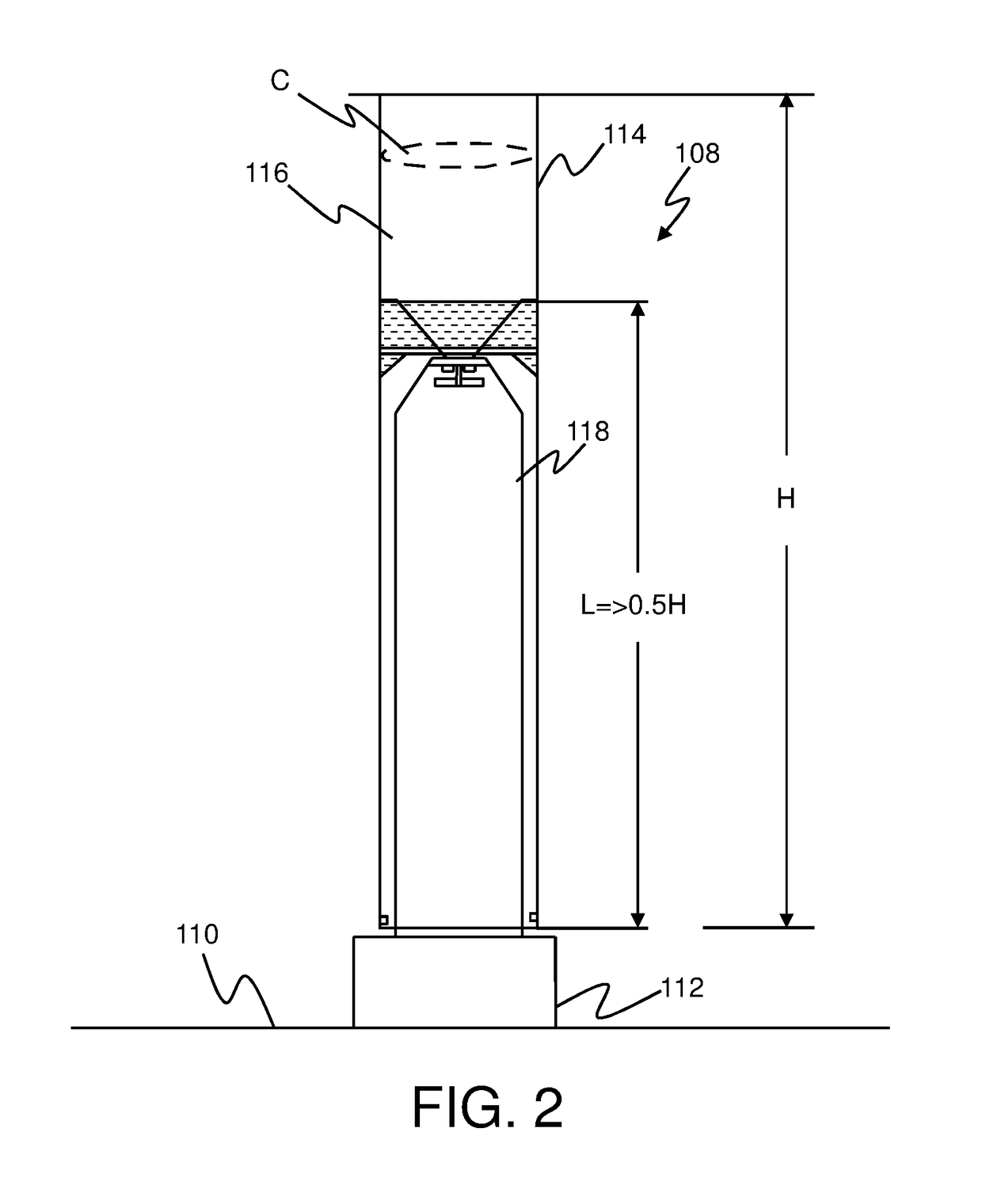Method of manufacturing a rotor body of a Magnus-type rotor
a technology of magnus-type rotors and manufacturing methods, which is applied in the field of magnus-type rotors, can solve the problems of large molds and associated system hardware or equipment, the method of manufacturing is potentially not applicable in the case of the magnus-type rotor, and the maintenance of magnus-type rotors is often difficult to achiev
- Summary
- Abstract
- Description
- Claims
- Application Information
AI Technical Summary
Benefits of technology
Problems solved by technology
Method used
Image
Examples
first embodiment
[0071]As shown in FIG. 6, the rotor body 114 is shown including four loops 404a, 404b, 404c, and 404d. Although it has been disclosed herein that the loops 404a and 404b from the rotor body 114 of the first embodiment are optionally of similar or dissimilar heights h1, h2 (as defined on the basis of the heights h of the respective panels 402 therein), it is optionally possible to have different heights h for each panel 402 in the given loops 404a, 404b, 404c, and 404d as shown in the rotor body 114 of the first modified embodiment of FIG. 6.
first modified embodiment
[0072]Referring again to FIG. 6, the different heights can be, for example, h3, h4, h5, h6. The different heights of the individual panels give a staggered, tiered or toothed appearance to proximal ends 508a of the associated loops 404c and 404b. Upon stacking of the staggered, tiered or tooth shaped loops 404c and 404d in the rotor body 114, the rotor body 114 is rendered with an inter-fitting pattern. However, distal ends or edges 508b of panels 402 from loops 404c and 404d of the rotor body 114 can be formed in a straight-cut profile to allow fitment with other higher assemblies, for example, the loop 404b, that are located subsequent or adjacent to the rotor body 114. Optionally, such a straight-cut profile at distal ends 508b of the panels 402 from loops 404c and 404d of the rotor body 114 is optionally provided to adhere to pre-defined design parameters and / or to achieve pre-defined operational characteristics from the rotor body 114. Therefore, it is hereby envisaged that mod...
PUM
| Property | Measurement | Unit |
|---|---|---|
| height | aaaaa | aaaaa |
| diameter | aaaaa | aaaaa |
| diameter | aaaaa | aaaaa |
Abstract
Description
Claims
Application Information
 Login to View More
Login to View More - R&D
- Intellectual Property
- Life Sciences
- Materials
- Tech Scout
- Unparalleled Data Quality
- Higher Quality Content
- 60% Fewer Hallucinations
Browse by: Latest US Patents, China's latest patents, Technical Efficacy Thesaurus, Application Domain, Technology Topic, Popular Technical Reports.
© 2025 PatSnap. All rights reserved.Legal|Privacy policy|Modern Slavery Act Transparency Statement|Sitemap|About US| Contact US: help@patsnap.com



